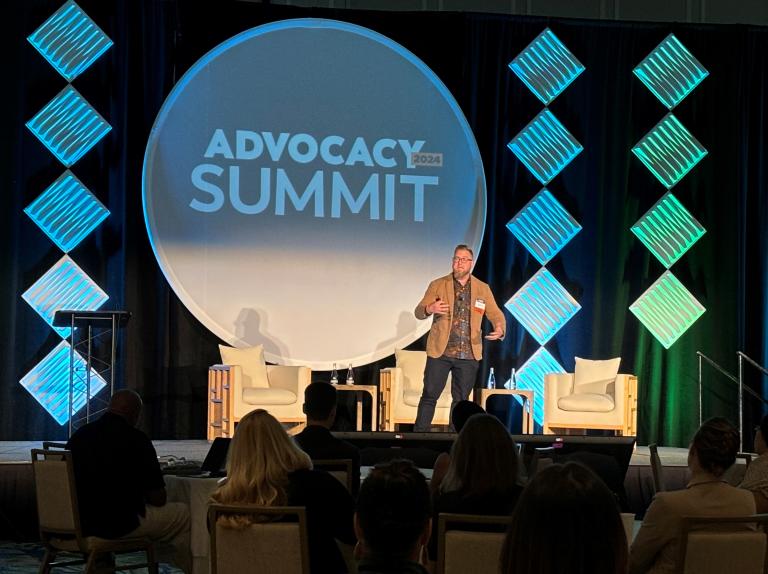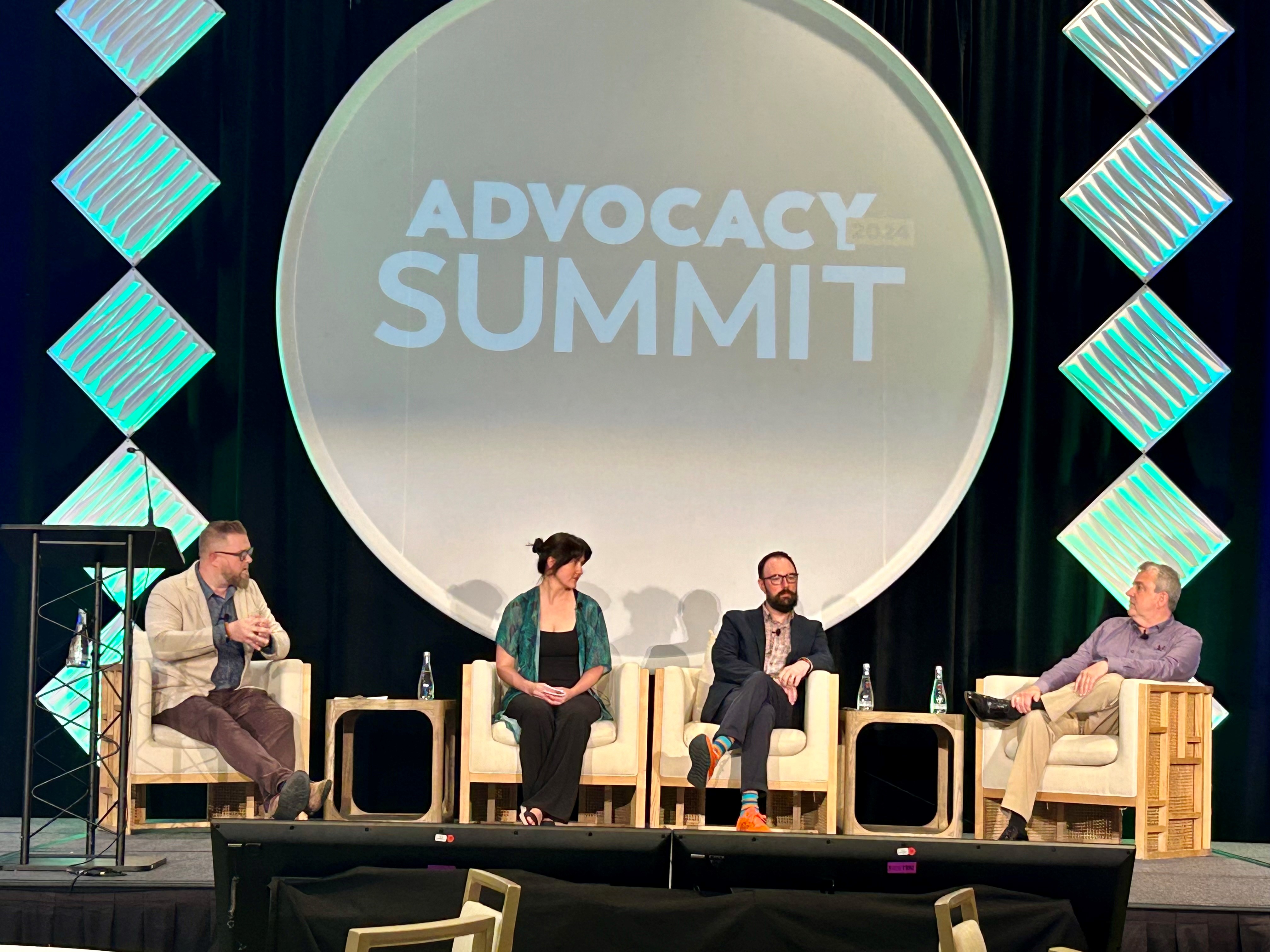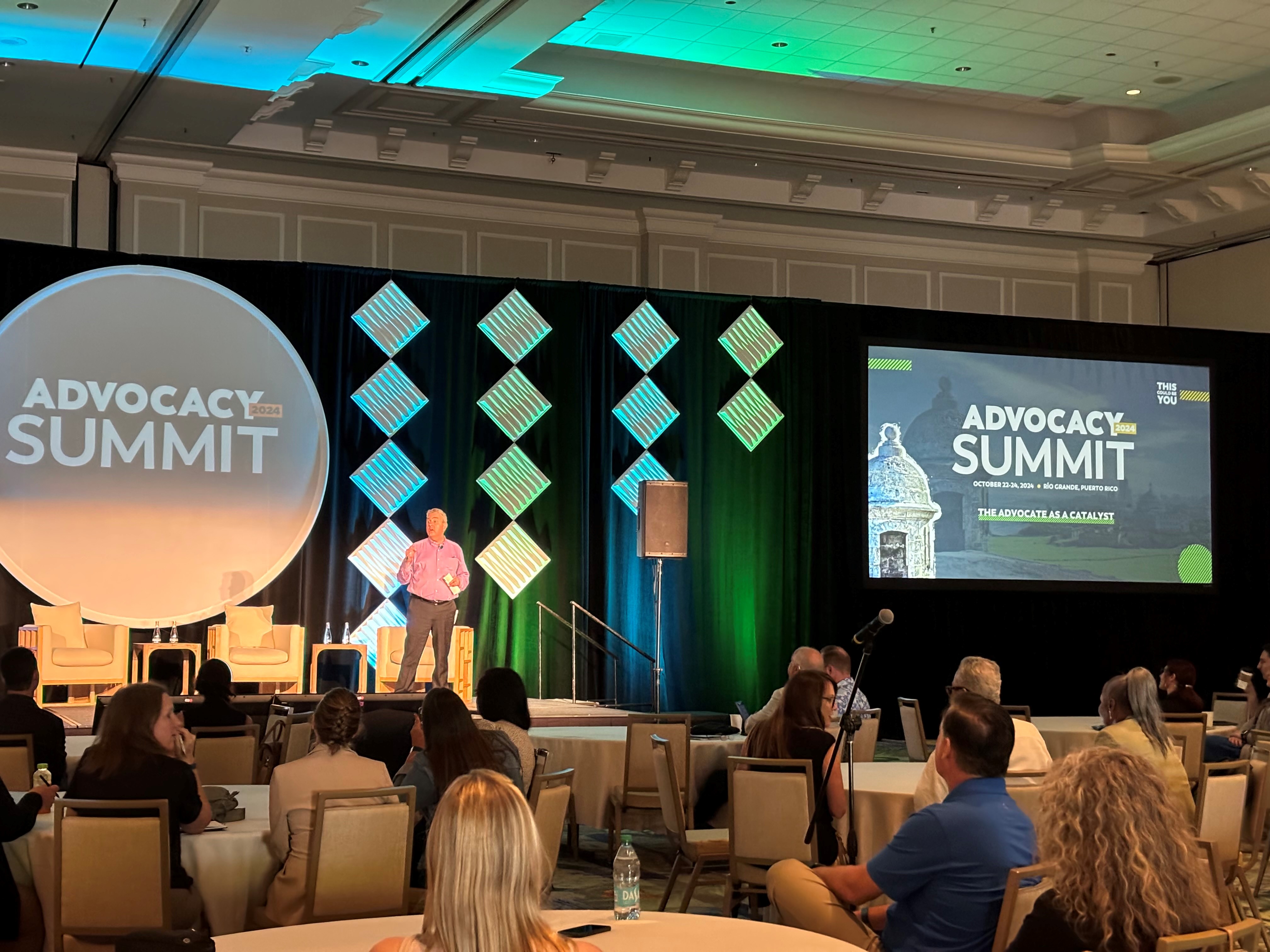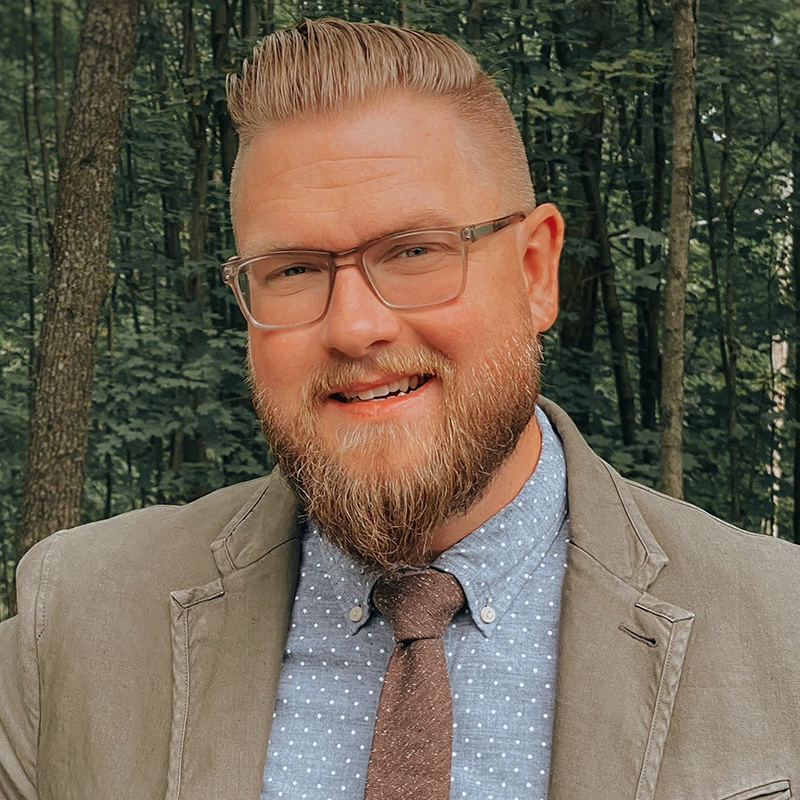
At the 2024 Advocacy Summit in Puerto Rico, terms like “Destination Stewardship,” “Tourism Dependency,” and “Catalytic Service” were on the air. We unpack each of these concepts to help your DMO become “Known, Valued, and Empowered” and secure in the future to do its vital work.
The 2024 Destinations International (DI) Advocacy Summit kicked off this October in the beautiful, resilient, and famously welcoming Rio Grande, Puerto Rico.
We may have turned a corner…
I have often framed advocacy as the work we must get right because if we don’t, we might not be given the opportunity to do anything else right. That low-grade fever of fear that simmers in the minds of DMO leaders, that an organizational threat or funding attack might be coming, has driven many talented minds to consider advocacy a perennial practice. However, a greater mindset was introduced this year and proven by many that our advocacy tool belt is not just for defense but to empower us to do more, be more, care more, and ultimately be the catalyst for destination vibrancy.

Here is the talking point memo:
1. Jack Johnson, DI’s Chief Advocacy Officer, deep thinker, and storyteller, reminded us that humans evolved to be uniquely built for endurance and tremendous curiosity. We were built for travel. Travel formed who we are as a species; travel is still essential today. As leaders in this industry, we are here to tell anyone who will listen that travel is essential and that the organizations that exist to promote, steward, and manage destinations’ visitor economies must be “known, valued and empowered.” We will have to move from “Destination Marketing to Destination Stewardship” to fully deliver for our customers, who are our community’s residents first.
Jack also took us through the landscape of the world’s elections. Over 50% of the globe is voting this year, meaning change will likely come to many countries. Voters often go to the polls for change, but more specifically, change they perceive will end chaos.
2. Erin Francis Cummings from Future Partners shared a first look at how major societal issues can affect the brand of a destination and the decision to travel there. The results showed that safety matters were all at the top of the decision metrics for choosing a destination. However, we know that our destinations are often misperceived in the various safety categories (gun violence, homelessness, crime, and social standings/laws), and we can dramatically change perceptions with effective incentives, marketing, testimonials, and ultimately, FAM trips.
3. Adam Sacks from Tourism Economics led a panel that gave a deeper look into the recent landmark research Destination Promotion: A Catalyst for Community Vitality and how, yes, our work is already a catalyst, but we can go further. The panelists gave examples of workforce development, destination airlift and supply, building local ambassadors, and more. Don’t rely on your promotion work to be a catalyst but find ways to be a “Catalytic Service” to your destination.
4. Kyle Huff from Tempest joined Jack Johnson to discuss the Destination Effect website. This project is about capturing our work's stories and impact in one central place. This content can help seed “top of grass” marketing strategies from DI but also will ultimately be a place we push stakeholders, funders, board members, etc., to deepen their view of our work. One destination helped save their destination’s iconic fireflies; what did you do recently? Submit your story today!
5. DI’s Andreas Weissenborn led a panel that dove into Zartico’s work of helping widen the KPIs we can report on. Andreas underscored that we are in a “story world now” and are pursuing a “net positive outcome for our destinations.” Issues we face locally might be a “failure in destination management,” not the public, and therefore, we need more ways to measure our success than just economics and hotel metrics. Learn about the New Destination Community Indicators, a joint Destinations International and Zartico initiative.

6. Bill Geist from DMO Proz offered the biggest takeaways from his Industry Sector podcast: DMOU, Destination Marketing Organization University, now 150 guests and 125 episodes strong. Judging by chatter later over meals and drinks, the biggest takeaway was from his episode with Kalene Griffith, CEO of Bentonville CVB, on how she went beyond “Being at every table.” Kalene invited community leaders to her table every Monday morning, listened, and asked, “What do you need? What can we do?” She didn’t just join tables; she created the table!
7. Amir Elon from Longwoods International revealed the latest research: The Canadian and US Resident Sentiment Towards Tourism study. Amir mentioned that the number of “Neutral” responses is high enough to be your friend or your enemy; these are what we need strategies to improve on. We are gaining ground in both Canada and the US in resident sentiment in favor of tourism and its positive effect on their destinations.
8. DI’s Andreas Weissenborn shared our 2024 Tourism Lexicons for Australia, Canada, the UK, and the US. The Lexicon was born from analyzing the language elected officials used when speaking in support of common goods and the policies behind them. It is this shared belief that destination promotion is also a common good for the greater good of our communities that underpins the need for the tourism lexicon. If we align our values with what our residents see as a common good, we must communicate that way. Use these new Tourism Lexicons to train your everyday AI to help pre-write and think out how you communicate. Download the 2024 Tourism Lexicons.
9. Cynthia Eichler, President and CEO of Visit Fort Collins, welcomed us into her journey from a visitor center concept that wasn’t working to a visitor center that became a true community shared value. Her presentation was a masterclass on how we can look at our role, our assets, our partners, and our community and become a force for good by creating win-win-wins. The visitor center of the future is a visitor center AND community hub/asset.
10. During the Marketplace of Ideas sessions, industry partners teamed up with destinations that had success together in collaboration and showcased best practices from the work. Here are a few moments of genius I was able to sit in on:
a. David Holder from Clarity of Place presented examples of their work using Place Balance and how they measure, plan, and message a destination's “Tourism Dependency.” Jaime Bohler Smith with Visit Hendricks County talked about their work together and dropped this amazing gem: “Quality of place is built, quality of life is felt”!
b. Ana Maria Viscasillas and Cassandra McAuley from MMGY NextFactor showed examples of how the DI DestinationNEXT assessment tool allows several destinations that are proximate but not necessarily working together to find consensus and work toward new common goals.
c. Amy Bjarnason with Destination Think presented how destinations embody sustainability into their future planning. She introduced the idea that a destination organization has a “social license to operate” from the constituents of any destination. We must align and lead to be able to continue our work.
d. Tori DeMarco from Tempest and Rickey Thigpen, Ph.D., President and CEO of Visit Jackson, co-presented on how agencies like Tempest are becoming extensions of their staff. They are sharing values and workloads, even on the ground. These agencies, which are immersed in the industry, bring more to the table than just professional services. They bring an understanding of the deep work and goals of a Destination Organization.
11. John Lambeth, President and CEO of Civitas, led sessions on funding how-tos and success stories. John encouraged us to remember to “Be there before we have to be there” when it comes to elected officials and funders and that “Change happens at the speed of trust.”
a. Tampa was showcased as a destination that finally secured a TID mechanism for funding, but it wasn’t without a process and, ultimately, a legal fight. Be ready to go the distance.
b. Stan Rubins from Visit Orlando outlined how some potential funding challenges led to building a complete marketing and PR campaign explicitly centered on getting the local council to understand what Visit Orlando does and the effect that it has. Campaigns deployed only locally are not typical, but the DMO had all the necessary skills.
c. Davis Meyer from Visit Palm Springs outlined how they brought thousands of vacation rentals into the industry as occupancy tax collectors and then worked to help them grow better as neighbors in their prospective neighborhoods. They, too, launched an internal campaign for resident alignment with this important sector.
12. David Peacock from Future Tourism Group @ Simpleview recapped the main themes from his Podcast, The Future of Tourism. The main takeaways from his past episodes were: “Smart cities are here; it’s time to think about smart tourism,” “The future is here; it's just not evenly distributed,” and “If you lead with a narrow vision, you’ll get narrow-minded people, and if you lead with a broad vision, you’ll get broad-minded people.”
13. Amy Bjarnason from Destination Think led us through the concepts behind the world’s sustainable tourism thinkers. The phrase that popped out was, “Sustainability means you can do it forever.” She also previewed a sustainability lexicon and the carefully crafted definitions of the words and phrases we start to work with as we embark on destination sustainability management. Learn more here.

14. During our two roundtable sessions, we asked questions about building resident sentiment, engaging locals, and successful advocacy-in-motion examples. Here were some of the top takeaways:
a. Discover Puerto Rico shared how they stepped up as a team to educate visitors about beach safety. They published visual guides on best swimming practices and rip-tide safety. The residents asked them to do this, and they delivered.
b. Jill Delaney from Discover Albany highlighted that resident sentiment can be measured and tested by finding where locals are commenting already. These could range from Reddit threads to Facebook comments and groups. You may be able to find community thoughts now before waiting for research results.
c. Julie Gilbert of Destination Door County shared how they message their tourism industries, organizational work, and value through direct mail campaigns in the newspaper because that is how the residents get information. Get your message to where they will find it.
15. Finally, the DI Advocacy & Research Team discussed the future of their work. The 2024 recap included 100 DI blog posts published this year, forty professional development webinars and thirty brand-new research and resources for making positive change in the communities we serve.
Next year, the Destinations International Advocacy and Research team seeks to deepen the toolbox and means to empower destinations to activate these strategies. Look for the DI Advocacy Field Guide and Lexicon AI integration guides.
The story continues in Sacramento, California in 2025 on October 21-23rd. Be there!
Submit Your Thought Leadership

Share your thought leadership with the Destinations International team! Learn how to submit a case study, blog or other piece of content to DI.


